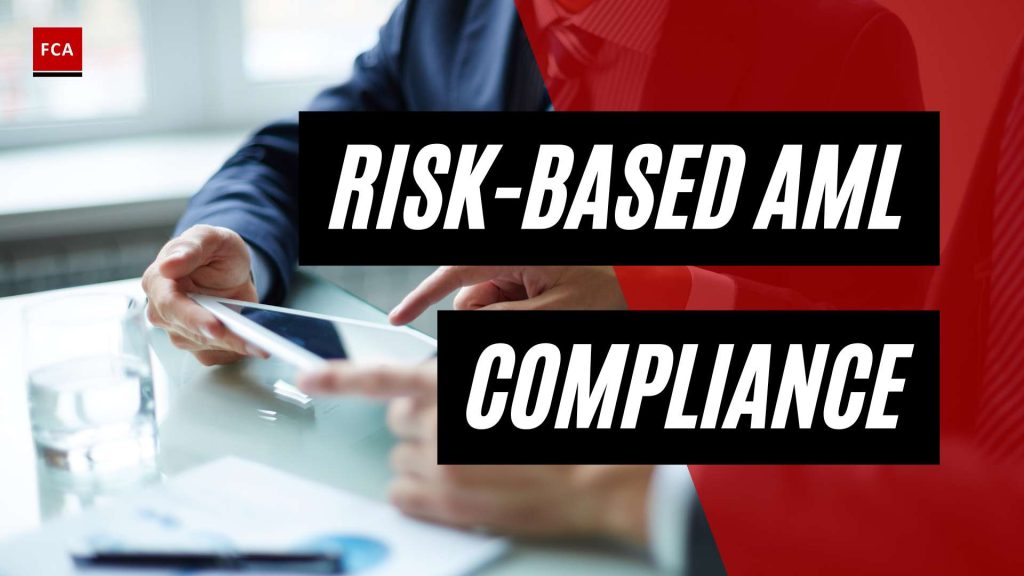AML Compliance Framework
Ensuring compliance with Anti-Money Laundering (AML) regulations is crucial for financial institutions and businesses operating in industries susceptible to money laundering risks. Implementing an effective AML compliance framework helps organizations mitigate these risks and maintain integrity within the financial system. This section provides an overview of AML compliance and explores the USA PATRIOT Act and Bank Secrecy Act.
Understanding AML Compliance
AML compliance refers to the set of regulations, policies, and procedures designed to prevent and detect money laundering activities. Money laundering involves disguising the illicit origins of funds, making them appear legitimate. AML compliance measures aim to identify and report suspicious transactions, ensuring that financial institutions play an active role in combating money laundering.
Financial institutions must comply with various regulatory requirements, including customer identification, transaction monitoring, and reporting suspicious activities to regulatory authorities. Failure to comply with AML regulations can result in severe consequences such as financial penalties, reputational damage, and legal consequences.
Overview of the USA PATRIOT Act and Bank Secrecy Act
The USA PATRIOT Act (Uniting and Strengthening America by Providing Appropriate Tools Required to Intercept and Obstruct Terrorism Act) and the Bank Secrecy Act (BSA) are two key pieces of legislation that significantly impact AML compliance in the United States.
The USA PATRIOT Act, enacted in response to the September 11, 2001 terrorist attacks, expanded the scope of AML obligations for financial institutions. It introduced provisions to enhance customer identification and due diligence processes, strengthen the reporting of suspicious activities, and foster information sharing among financial institutions and government agencies.
The Bank Secrecy Act, originally passed in 1970, requires financial institutions to establish robust compliance programs to prevent money laundering. It imposes obligations such as currency transaction reporting requirements and the establishment of anti-money laundering programs. The BSA also created the Financial Crimes Enforcement Network (FinCEN), a bureau of the U.S. Department of the Treasury, responsible for enforcing AML regulations and providing guidance to financial institutions.
Understanding the USA PATRIOT Act and the Bank Secrecy Act is essential for organizations operating within the United States, as compliance with these laws is crucial to maintaining a strong AML framework.
By adhering to the AML compliance framework and understanding the regulations set forth by the USA PATRIOT Act and Bank Secrecy Act, organizations can effectively combat money laundering and protect themselves from potential risks.
The Need for a Risk-Based Approach
When it comes to Anti-Money Laundering (AML) compliance, a risk-based approach is essential to effectively combat financial crime. Traditional approaches to AML compliance often suffer from limitations that hinder their effectiveness in identifying and addressing money laundering risks. In contrast, a risk-based approach offers a more proactive and efficient way to manage AML compliance.
The Limitations of Traditional Approaches
Traditional approaches to AML compliance tend to be rule-based and rely on a one-size-fits-all approach. These approaches often involve implementing rigid and static procedures that may not adequately adapt to the evolving nature of money laundering techniques. This can result in several limitations, including:
-
Inefficiency: Traditional approaches may lead to a high number of false positives, requiring significant time and resources to investigate and clear alerts. This can result in compliance teams being overwhelmed and potentially missing genuine suspicious activities.
-
Lack of Focus: The rule-based nature of traditional approaches may not prioritize risks based on their severity. Compliance efforts may be spread thin, with less attention given to higher-risk areas, allowing potential money laundering activities to go undetected.
-
Reactive Response: Traditional approaches are often reactive, relying on identifying suspicious activities after they have occurred. By the time these activities are detected, significant damage may have already been done, making it challenging to recover the illicit funds.
Benefits of a Risk-Based Approach
A risk-based approach to AML compliance offers several benefits over traditional methods. By focusing on the identification and management of risks, a risk-based approach enables organizations to allocate resources more efficiently and effectively. Here are some key advantages:
-
Proactive Risk Management: A risk-based approach allows organizations to proactively identify, assess, and mitigate money laundering risks. By prioritizing higher-risk areas, compliance efforts can be tailored to target the most significant threats, enhancing the effectiveness of AML measures.
-
Efficient Resource Allocation: By understanding the risks associated with different customers, products, and jurisdictions, organizations can allocate their resources more efficiently. This helps in reducing unnecessary compliance costs and streamlining processes, resulting in improved operational efficiency.
-
Flexibility and Adaptability: A risk-based approach recognizes the dynamic nature of money laundering risks. By regularly conducting risk assessments and monitoring emerging trends, organizations can update their AML strategies and adapt to evolving risks more effectively.
-
Enhanced Compliance Effectiveness: A risk-based approach enables organizations to focus their efforts on areas of higher risk, improving the detection and prevention of money laundering activities. This helps in reducing false positives, ensuring that compliance teams can devote their attention to genuine suspicious activities.
By embracing a risk-based approach to AML compliance, organizations can better align their resources, proactively manage risks, and effectively combat money laundering. The key elements of a risk-based approach, including risk assessment, customer due diligence, ongoing monitoring, and suspicious activity reporting, will be discussed in detail in the subsequent sections of this article.
Key Elements of a Risk-Based Approach
A risk-based approach is a fundamental component of an effective anti-money laundering (AML) compliance program. By focusing resources where the risks are greatest, organizations can prioritize their efforts and enhance their ability to detect and prevent money laundering and other illicit activities. The key elements of a risk-based approach to AML compliance include risk assessment, customer due diligence (CDD), ongoing monitoring, and suspicious activity reporting (SAR).
Risk Assessment
A risk assessment is the foundation of a risk-based approach to AML compliance. It involves identifying and evaluating the specific risks that an organization may face in relation to money laundering and terrorist financing. This assessment takes into consideration various factors, such as the nature of the organization’s products and services, its customer base, the geographic locations in which it operates, and the regulatory environment.
The risk assessment should be conducted regularly and reviewed when significant changes occur within the organization or the external environment. It allows organizations to allocate resources effectively and tailor their AML compliance program to address the identified risks. For more information on risk assessment and its importance, refer to our article on currency transaction reporting requirements.
Customer Due Diligence (CDD)
Customer due diligence is a critical element of any AML compliance program. It involves gathering information about customers, verifying their identities, and assessing their risk profiles. CDD measures help organizations identify and understand the potential risks associated with their customers, enabling them to take appropriate actions to mitigate those risks.
During the CDD process, organizations should establish and document the purpose and intended nature of the business relationship. They should also obtain and verify customer identification information, which may include government-issued identification documents, proof of address, and beneficial ownership information. For more information on CDD requirements, refer to our article on USA PATRIOT Act customer identification program.
Ongoing Monitoring
Ongoing monitoring is crucial to effectively manage the risks associated with money laundering and terrorist financing. It involves the regular review and scrutiny of customer accounts and transactions to identify any unusual or suspicious activity. Ongoing monitoring ensures that organizations remain vigilant and are able to detect potential red flags in a timely manner.
The frequency and intensity of ongoing monitoring should be determined based on the risk profile of the customer and the nature of the business relationship. By implementing robust monitoring systems and processes, organizations can identify patterns, trends, or deviations from expected behavior, enabling them to take appropriate action. For more information on ongoing monitoring, refer to our article on enhanced due diligence for high-risk customers.
Suspicious Activity Reporting (SAR)
The reporting of suspicious activity is a crucial step in combating money laundering and other illicit activities. Organizations should have procedures in place to encourage and facilitate the reporting of suspicious transactions or activities to the appropriate authorities. This involves the timely filing of suspicious activity reports (SARs) to the Financial Crimes Enforcement Network (FinCEN) or other relevant regulatory bodies.
SARs provide valuable information to law enforcement and regulatory agencies, helping them identify and investigate potential money laundering or terrorist financing schemes. Organizations should ensure that their employees are trained on recognizing and reporting suspicious activity as part of their AML compliance efforts. For more information on SAR requirements, refer to our article on BSA/AML compliance program.
By incorporating these key elements into their AML compliance program, organizations can strengthen their ability to detect and prevent money laundering and other illicit activities. However, it’s important to note that the specific implementation of these elements may vary depending on the size, complexity, and nature of the organization. Organizations should continually evaluate and adapt their risk-based approach to align with evolving risks and regulatory requirements.
Implementing a Risk-Based Approach
Implementing a risk-based approach is crucial in ensuring effective Anti-Money Laundering (AML) compliance. By focusing resources on higher-risk areas, organizations can enhance their AML programs and better prevent financial crimes. This section explores key elements involved in implementing a risk-based approach, including developing risk profiles, establishing risk thresholds, conducting enhanced due diligence (EDD), and continual evaluation and adaptation.
Developing Risk Profiles
To implement a risk-based approach, organizations must first develop risk profiles for their customers, products, services, and geographic locations. This involves assessing various factors that contribute to the risk level, such as the customer’s industry, transaction patterns, and jurisdictions involved. By analyzing these factors, organizations can identify high-risk areas that require additional scrutiny and allocate resources accordingly. Risk profiles should be regularly updated to reflect changes in the business landscape and emerging risks.
Establishing Risk Thresholds
Establishing risk thresholds is an essential step in the risk-based approach. Organizations need to define the level of risk they are willing to tolerate and establish clear guidelines for identifying customers and transactions that exceed these thresholds. This ensures that higher-risk entities receive appropriate attention and undergo enhanced due diligence measures. Risk thresholds can be based on factors like transaction amounts, country risk ratings, and suspicious activity indicators.
Conducting Enhanced Due Diligence (EDD)
Enhanced Due Diligence (EDD) is a crucial component of AML compliance in a risk-based approach. It involves conducting enhanced scrutiny and gathering additional information for customers or transactions that are identified as high risk. EDD measures may include verifying the source of funds, understanding the customer’s business activities, and assessing the customer’s risk exposure. Implementing EDD procedures helps organizations mitigate risks associated with higher-risk customers and transactions. For more information on EDD, refer to our article on enhanced due diligence for high-risk customers.
Continual Evaluation and Adaptation
A risk-based approach is not a one-time exercise but requires continual evaluation and adaptation. As the risk landscape evolves, organizations must monitor and reassess their risk profiles, risk thresholds, and EDD procedures. Regular reviews ensure that the risk-based approach remains effective and aligned with emerging threats and regulatory changes. By staying abreast of industry trends and incorporating feedback from internal and external stakeholders, organizations can continually enhance their AML compliance programs.
Implementing a risk-based approach to AML compliance enables organizations to focus their resources on areas of highest risk, enhancing their ability to detect and prevent financial crimes. By developing risk profiles, establishing risk thresholds, conducting enhanced due diligence, and continually evaluating and adapting their approach, organizations can stay ahead in the fight against money laundering. For more insights on AML compliance best practices, refer to our article on AML compliance best practices.
Best Practices for AML Compliance
To ensure effective Anti-Money Laundering (AML) compliance, financial institutions and organizations must implement robust practices and procedures. By following best practices, they can mitigate the risk of money laundering and terrorist financing. Here are key areas to focus on:
Robust Policies and Procedures
Establishing and maintaining robust AML policies and procedures are essential for effective compliance. These policies should align with regulatory requirements and industry standards. They should cover all aspects of AML, including customer due diligence, transaction monitoring, and reporting suspicious activity.
By implementing comprehensive policies and procedures, organizations can provide clear guidance to employees, ensuring consistency in AML practices. These documents should be regularly reviewed and updated to reflect changes in regulations and emerging risks.
Staff Training and Awareness
Training employees on AML compliance is crucial to fostering a strong compliance culture within an organization. Staff should receive regular training on AML regulations, red flag indicators, and reporting requirements. Training sessions should be tailored to different roles and responsibilities within the organization.
By enhancing staff knowledge and awareness of AML risks and obligations, organizations can empower employees to recognize suspicious activities and take appropriate actions. Training should be reinforced through ongoing awareness campaigns and communication.
Technology and Data Analytics
Leveraging technology and data analytics is vital for effective AML compliance. Implementing advanced AML software solutions can streamline processes, enhance efficiency, and improve detection capabilities. These tools can help automate transaction monitoring, customer due diligence, and suspicious activity reporting.
Data analytics can play a significant role in identifying patterns and anomalies that may indicate potential money laundering activities. By utilizing technology and data analytics, organizations can enhance their ability to detect and prevent financial crimes.
Collaboration and Information Sharing
Collaboration and information sharing among financial institutions and regulatory authorities are critical for effective AML compliance. Establishing strong partnerships and communication channels can facilitate the exchange of information on emerging risks, typologies, and best practices.
Participating in industry forums, sharing insights, and collaborating on AML initiatives can help organizations stay informed about evolving threats and regulatory changes. It enables the development of more effective AML strategies and enhances the overall effectiveness of the AML framework.
By implementing these best practices, organizations can establish a robust AML compliance program that aligns with regulatory requirements and industry standards. These practices promote a risk-based approach to AML compliance and contribute to the fight against money laundering and terrorist financing. For more information on AML compliance best practices, refer to our article on AML compliance best practices.








